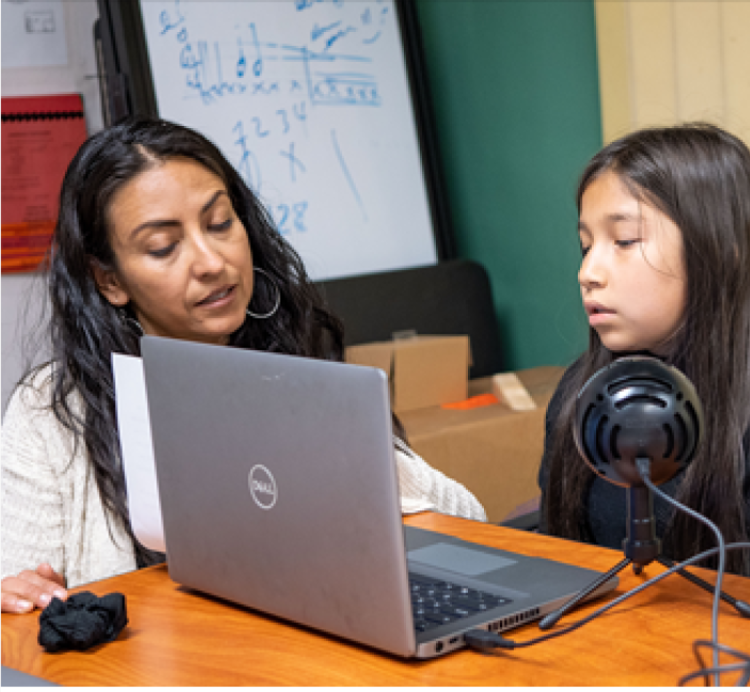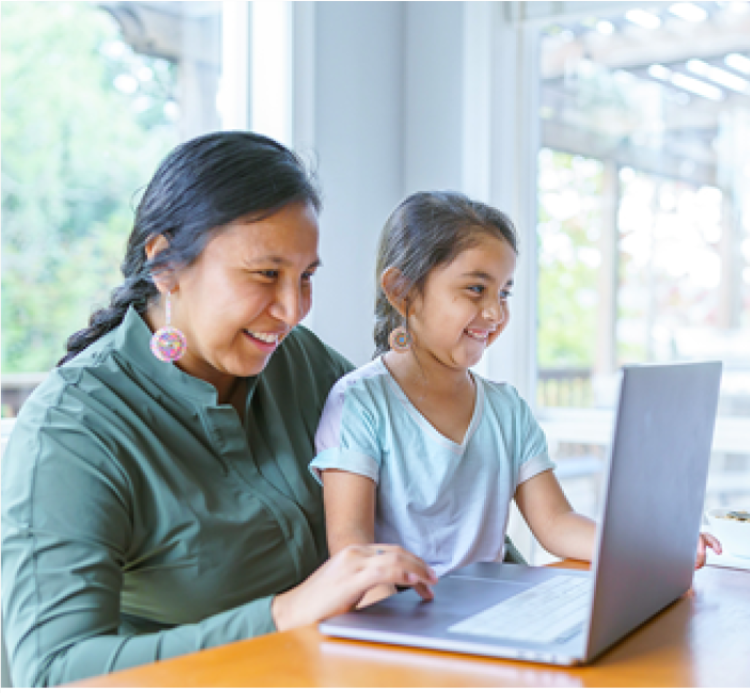Comprehensive Guide to Emphasizing Social-Emotional Learning (SEL) Strategies during Remote Work and Study
During remote work and study, social-emotional learning (SEL) becomes even more critical for both teachers and students. Fostering emotional well-being, self-awareness, empathy, and positive relationships can help create a supportive remote learning environment. This detailed guide provides teachers and parents with practical strategies to emphasize SEL while working and studying remotely.
| Pivot to Remote Learning Planning Resource This guide provides a comprehensive roadmap for schools and educators on effectively pivoting to remote instruction. The shift to remote learning presents unique challenges, but with careful planning, clear communication, and a focus on student engagement and well-being, schools can create a successful and enriching remote learning experience for all students. Emphasizing the use of technology, synchronous and asynchronous teaching methods, and a strong support system for students, parents, and teachers, this guide aims to equip educational institutions with the necessary tools and strategies to adapt seamlessly to remote instruction during challenging times. By prioritizing collaboration, flexibility, and continuous improvement, schools can ensure that learning never stops and students continue to thrive in a remote learning environment. |
For Teachers
Cultivate a Positive Virtual Classroom Culture:
- Begin each virtual class with a check-in to ask students how they are feeling and address any concerns.
- Use positive reinforcement and acknowledge student achievements and efforts.
Model Emotions and Self-Regulation:
- Demonstrate self-regulation techniques during virtual sessions to show how to manage emotions effectively.
- Share your experiences of overcoming challenges and handling stress positively.
Encourage Open Communication:
- Create opportunities for students to share their thoughts and feelings through chat or breakout room discussions.
- Be an active listener and validate their emotions and experiences.
Teach Mindfulness and Relaxation Techniques:
- Incorporate short mindfulness activities or relaxation exercises at the beginning or end of virtual classes.
- Provide resources or recommendations for mindfulness apps or guided meditation.
Promote Collaborative Learning:
- Organize group projects or activities to foster a sense of belonging and teamwork among students.
- Encourage virtual peer support and mutual learning.
Offer Individual Support:
- Schedule one-on-one virtual meetings with students to address their emotional needs and academic progress.
- Provide resources or referrals for additional support if needed.
Set Realistic Expectations:
- Clearly communicate academic expectations and assignments, keeping in mind the challenges of remote learning.
- Be flexible and understanding during this transitional period.
For Parents
Create a Nurturing Home Environment:
- Set up a designated learning space for your child, free from distractions.
- Encourage a balanced daily routine that includes breaks and time for physical activity.
Engage in Daily Check-ins:
- Start or end each day with a check-in conversation, asking about your child's feelings and experiences.
- Validate their emotions and provide reassurance and support.
Role Model Positive Behavior:
- Demonstrate emotional regulation and problem-solving in your daily life to set an example for your child.
- Share your own challenges and strategies for coping.
Practice Mindfulness Together:
- Engage in mindfulness activities as a family, such as deep breathing exercises or guided meditations.
- Practice gratitude by sharing what you are thankful for each day.
Foster Social Connections:
- Arrange virtual playdates or online interactions with friends and family to maintain social connections.
- Encourage communication through video calls or writing letters to relatives and friends.
Encourage Empathy and Communication:
- Teach your child to listen actively and empathize with others' feelings and experiences.
- Encourage them to express their feelings and communicate openly.
Limit Screen Time and Promote Physical Activity:
- Set reasonable limits on screen time and prioritize physical activities and outdoor play.
- Engage in family activities that promote movement and exercise.
By emphasizing social-emotional learning (SEL) strategies during remote work and study, teachers and parents can create a supportive and nurturing environment for students. Practicing mindfulness, promoting open communication, and fostering positive relationships will not only enhance emotional well-being but also improve students' overall engagement and academic success during this unique learning experience. Working together as a team, teachers and parents can help students thrive emotionally and academically during remote learning.
Exploring Math Together - A Remote Math Class Adventure Grade Level: 1-3
Objective: The objective of this lesson is to introduce students to the basics of working in a math class remotely using both synchronous and asynchronous instruction. By the end of this lesson, students will understand how to participate in live virtual math sessions and complete math activities independently.
Materials:
- Whiteboard or paper for brainstorming
- Pencil or pen
- Math manipulatives (if available)
- Computer/laptop with internet connectivity
- Conferencing platform (Zoom, Google Meet, etc.)
- Learning management system (LMS) or shared folder for asynchronous activities
- Duration: Approximately 45 minutes
Synchronous Instruction:
Engage (10 minutes):
- Gather students in a virtual class session using the chosen conferencing platform.
- Begin by asking students what they think a remote math class might look like and what they expect to learn.
Explore the Virtual Classroom (10 minutes):
- Introduce students to the conferencing platform and show them how to use basic features like muting/unmuting, raising hands, and using the chat function.
- Explain the importance of following virtual class rules, being respectful, and actively participating during live sessions.
Interactive Activity (15 minutes):
- Conduct an interactive math game or activity that involves all students. For example, a math scavenger hunt where students find objects with specific shapes or colors in their homes.
- Model how to share answers and thoughts using the chat or by unmuting.
Feedback and Wrap-up (5 minutes):
- Ask students to share their favorite part of the live math session.
- Remind students about the next scheduled synchronous math class and encourage them to come prepared and enthusiastic.
Asynchronous Instruction:
Introduce Asynchronous Activities (5 minutes):
- Provide students with access to a designated LMS or shared folder containing pre-recorded video lessons and math activities.
- Explain how to access and navigate the asynchronous content independently.
Independent Math Activity (20 minutes):
- Assign a math activity that reinforces concepts covered in the synchronous session. For example, a worksheet or online math game.
- Encourage students to work at their own pace and seek help from parents or caregivers if needed.
Math Journal or Reflection (10 minutes):
- Ask students to reflect on the asynchronous math activity in a journal entry or short video response.
- Prompt them to share what they learned, any challenges they faced, and their feelings about working independently.
In this sample lesson, students in Grades 1-3 are introduced to remote math class dynamics with both synchronous and asynchronous instruction. They engage in interactive activities during the live session and work independently on assigned math activities in the asynchronous component. This blended approach provides students with the necessary skills and confidence to thrive in remote math classes while promoting active learning and participation.
Navigating Remote Learning: Setting the Course for Success Grade Level: 6-8
Objective: The objective of this lesson is to acclimate students to remote learning, helping them understand the expectations, tools, and strategies essential for successful participation. By the end of this lesson, students will be familiar with the remote learning environment, communication platforms, and time management techniques.
Materials:
- Computer/laptop with internet connectivity
- Conferencing platform (Zoom, Google Meet, etc.)
- Learning management system (LMS) or shared folder for accessing resources
- Timer or stopwatch
- Pen/pencil and paper or digital note-taking tools
Duration: Approximately 60 minutes
- Welcome and Icebreaker (10 minutes):
- Greet the students and welcome them to the remote learning environment.
- Begin with a fun icebreaker activity to encourage student engagement and build a sense of community. For example, a "Two Truths and a Lie" game, where students take turns sharing three statements, and others guess which one is false.
- Understanding Remote Learning (15 minutes):
- Explain the concept of remote learning and its benefits, emphasizing that it allows for flexibility and independent learning.
- Discuss the importance of self-discipline, time management, and accountability in a remote learning setting.
- Exploring the Online Learning Platform (15 minutes):
- Introduce the learning management system (LMS) or shared folder where resources, assignments, and communication will be available.
- Demonstrate how to access assignments, resources, and class materials on the platform.
- Navigating the Conferencing Platform (15 minutes):
- Familiarize students with the conferencing platform (Zoom, Google Meet, etc.) used for live virtual classes.
- Guide students through basic features like joining a meeting, muting/unmuting, sharing screens, and using the chat function.
- Time Management Strategies (10 minutes):
- Discuss effective time management techniques, such as creating a daily schedule, setting timers for work and breaks, and prioritizing tasks.
- Encourage students to establish a study routine that works best for them.
- Remote Learning Etiquette (10 minutes):
- Review essential remote learning etiquette, including muting microphones when not speaking, using the chat feature respectfully, and maintaining a positive and focused attitude during class sessions.
- Emphasize the importance of active participation and listening attentively to peers and teachers during discussions.
- Goal Setting and Self-Assessment (10 minutes):
- Encourage students to set short-term and long-term goals for their remote learning journey.
- Discuss the importance of self-assessment and reflection to identify areas of improvement and celebrate progress.
- Conclusion (5 minutes):
- Summarize the key points discussed in the lesson.
- Invite students to share any questions or concerns they may have about remote learning.
Homework (Optional Extension Activity): Assign a brief self-assessment task where students reflect on what they have learned during the lesson and set two specific goals to improve their remote learning experience. Encourage them to share their reflections and goals in the next class.
Note: This lesson can be adapted and delivered asynchronously for students who may need more time to navigate the remote learning environment independently.
Mastering Remote Learning: Strategies for Synchronous and Asynchronous Success
Grade Level: 9-12
Objective: The objective of this lesson is to equip high school students with effective strategies for learning in both synchronous and asynchronous formats during remote learning. By the end of this lesson, students will be able to differentiate between synchronous and asynchronous learning, employ time management techniques, and engage actively in both learning environments.
Materials:
- Computer/laptop with internet connectivity
- Conferencing platform (Zoom, Google Meet, etc.)
- Learning management system (LMS) or shared folder for accessing resources
- Timer or stopwatch
- Pen/pencil and paper or digital note-taking tools
Duration: Approximately 90 minutes (can be adapted for asynchronous learning)
Part 1: Introduction (20 minutes)
- Welcome and Objective Review:
- Greet the students and review the objective of the lesson: to master synchronous and asynchronous learning strategies for remote learning.
- Discuss the benefits and challenges of remote learning and its importance in adapting to changing educational environments.
- Understanding Synchronous and Asynchronous Learning:
- Define synchronous and asynchronous learning, explaining their differences and unique features.
- Discuss the advantages of each format and how they cater to different learning styles and preferences.
Part 2: Synchronous Learning Strategies (40 minutes)
- Navigating Virtual Classrooms:
- Familiarize students with the conferencing platform (Zoom, Google Meet, etc.) used for synchronous class sessions.
- Guide students through features like joining meetings, participating in discussions, and utilizing interactive tools.
- Active Participation and Engagement:
- Emphasize the importance of active participation during live virtual classes by asking questions, sharing ideas, and responding to prompts.
- Introduce techniques for effective note-taking and summarizing key points during synchronous sessions.
- Collaborative Learning:
- Encourage students to participate in group discussions, virtual group projects, and breakout room activities to foster collaboration.
- Discuss the benefits of working together to enhance understanding and build a sense of community.
- Time Management During Synchronous Learning:
- Teach students to manage their time effectively during virtual classes, including taking regular breaks and staying focused throughout the session.
- Conduct a short time management exercise to help students gauge their attention span during online sessions.
Part 3: Asynchronous Learning Strategies (30 minutes)
- Independent Learning and Self-Directed Study:
- Introduce the concept of asynchronous learning and its flexibility for independent study.
- Guide students in accessing assignments, resources, and materials in the LMS or shared folder.
- Managing Time and Deadlines:
- Teach students to create a study schedule for asynchronous assignments to ensure timely completion.
- Discuss strategies for breaking down larger tasks into manageable segments. Part 4: Conclusion and Self-Assessment (10 minutes)
- Reflecting on Learning Preferences:
- Lead a brief discussion where students share their learning preferences, whether synchronous, asynchronous, or a combination of both.
- Encourage students to identify their strengths and areas for improvement in remote learning.
- Wrap-up and Homework (5 minutes):
- Summarize the key takeaways from the lesson.
- Assign a self-assessment activity where students reflect on their learning preferences and create a personal remote learning plan that incorporates both synchronous and asynchronous strategies.
Note: The lesson can be adapted for asynchronous learning by providing students with pre-recorded videos, reading materials, and online activities to complete independently. The time management exercise can be converted into a reflection task.
Note: The schedule provides a general structure for a week of remote learning for elementary students. Actual times and subjects may vary depending on the school's curriculum and individual student needs.
Monday:
- 9:00 AM - 9:30 AM: Morning Meeting (Synchronous) - Greeting, agenda overview, and sharing.
- 9:45 AM - 10:30 AM: Math (Synchronous) - Teacher-led instruction and interactive activities.
- 11:00 AM - 11:45 AM: ELA (English Language Arts) - Reading and Writing (Asynchronous) - Independent reading and writing assignments.
- 1:00 PM - 1:30 PM: Science (Asynchronous) - Pre-recorded science lesson and related activity.
- 2:00 PM - 2:45 PM: Social Studies (Synchronous) - Interactive group discussion and virtual project.
Tuesday:
- 9:00 AM - 9:30 AM: Morning Check-In (Synchronous) - Review of yesterday's lessons and clarifications.
- 9:45 AM - 10:30 AM: Math (Asynchronous) - Online math practice exercises and problem-solving.
- 11:00 AM - 11:45 AM: ELA (Synchronous) - Reading Comprehension and Writing Practice.
- 1:00 PM - 1:45 PM: Specials (Asynchronous) - Art, Music, or PE activity provided by the specialized teacher.
- 2:00 PM - 2:45 PM: Social Emotional Learning (SEL) (Synchronous) - Virtual discussion on emotional well-being and coping strategies.
Wednesday:
- 9:00 AM - 9:30 AM: Morning Routine and Physical Activity (Asynchronous) - Stretching, exercises, or a virtual dance session.
- 9:45 AM - 10:30 AM: Math (Asynchronous) - Online math game or activity.
- 11:00 AM - 11:45 AM: ELA (Synchronous) - Reading Fluency and Vocabulary Building.
- 1:00 PM - 1:30 PM: STEM (Science, Technology, Engineering, Math) (Asynchronous) - Virtual experiment or engineering challenge.
- 2:00 PM - 2:45 PM: Social Studies (Asynchronous) - Independent research project or reading assignment.
Thursday:
- 9:00 AM - 9:30 AM: Morning Meeting (Synchronous) - Student-led sharing and peer interactions.
- 9:45 AM - 10:30 AM: Math (Synchronous) - Virtual problem-solving group activity.
- 11:00 AM - 11:45 AM: ELA (Asynchronous) - Reading comprehension and writing response to a prompt.
- 1:00 PM - 1:30 PM: Science (Synchronous) - Interactive science experiment or demonstration.
- 2:00 PM - 2:45 PM: Social Studies (Asynchronous) - Geography or history online game.
Friday:
- 9:00 AM - 9:30 AM: Morning Check-In and Reflection (Synchronous) - Sharing highlights of the week and setting goals for the next week.
- 9:45 AM - 10:30 AM: Math (Asynchronous) - Math review or puzzle activity.
- 11:00 AM - 11:45 AM: ELA (Synchronous) - Book discussion and virtual author visit (if available).
- 1:00 PM - 1:30 PM: Art (Asynchronous) - Virtual art lesson and creative project.
- 2:00 PM - 2:45 PM: Social Studies (Synchronous) - Virtual field trip or interactive historical reenactment.
Note: The schedule combines synchronous (live) sessions with the teacher and asynchronous (independent) activities to provide students with a balanced and engaging remote learning experience. Teachers can adapt the schedule as needed to accommodate students' learning styles and individual needs.
Sample High School Student Schedule for Remote Learning (Monday-Friday)
Note: The schedule below provides a general outline for a week of remote learning for high school students. Actual times and subjects may vary depending on the school's curriculum and individual student needs.
Monday:
- 9:00 AM - 9:30 AM: Morning Check-In (Synchronous) - Review of the week's schedule and important announcements.
- 9:45 AM - 10:30 AM: Math (Synchronous) - Teacher-led instruction and virtual problem-solving activities.
- 11:00 AM - 11:45 AM: English Language Arts (ELA) (Synchronous) - Interactive discussion and analysis of literary texts.
- 1:00 PM - 1:45 PM: Science (Asynchronous) - Independent research and online lab activities.
- 2:00 PM - 2:45 PM: Social Studies (Synchronous) - Virtual debate or group discussion on historical events.
Tuesday:
- 9:00 AM - 9:30+ AM: Morning Routine and Physical Activity (Asynchronous) - Virtual fitness session or personal exercise routine.
- 9:45 AM - 10:30 AM: Math (Asynchronous) - Online math practice exercises and problem-solving.
- 11:00 AM - 11:45 AM: English Language Arts (ELA) (Synchronous) - Writing workshop and peer review.
- 1:00 PM - 1:45 PM: Elective Course (Asynchronous) - Independent project or assignment provided by the specialized teacher.
- 2:00 PM - 2:45 PM: Social Emotional Learning (SEL) (Synchronous) - Virtual discussion on emotional well-being and coping strategies.
Wednesday:
- 9:00 AM - 9:30 AM: Morning Check-In and Goal Setting (Synchronous) - Review of individual academic goals and progress.
- 9:45 AM - 10:30 AM: Math (Asynchronous) - Online math game or challenge.
- 11:00 AM - 11:45 AM: English Language Arts (ELA) (Synchronous) - Literary analysis and discussion.
- 1:00 PM - 1:30 PM: Science (Synchronous) - Virtual experiment or simulation.
- 2:00 PM - 2:45 PM: Social Studies (Asynchronous) - Independent research project or reading assignment.
Thursday:
- 9:00 AM - 9:30 AM: Morning Meeting (Synchronous) - Student-led sharing and peer interactions.
- 9:45 AM - 10:30 AM: Math (Synchronous) - Collaborative problem-solving in virtual breakout groups.
- 11:00 AM - 11:45 AM: English Language Arts (ELA) (Asynchronous) - Writing response to a literary prompt.
- 1:00 PM - 1:30 PM: Science (Synchronous) - Interactive science experiment or demonstration.
- 2:00 PM - 2:45 PM: Social Studies (Asynchronous) - Virtual field trip or interactive historical reenactment.
Friday:
- 9:00 AM - 9:30 AM: Morning Check-In and Reflection (Synchronous) - Sharing highlights of the week and setting goals for the next week.
- 9:45 AM - 10:30 AM: Math (Asynchronous) - Math review or puzzle activity.
- 11:00 AM - 11:45 AM: English Language Arts (ELA) (Synchronous) - Book discussion and virtual author visit (if available).
- 1:00 PM - 1:30 PM: Elective Course (Asynchronous) - Virtual art lesson or creative project.
- 2:00 PM - 2:45 PM: Social Studies (Synchronous) - Current events discussion and debate.
Note: The schedule combines synchronous (live) sessions with the teacher and asynchronous (independent) activities to provide high school students with a balanced and engaging remote learning experience. Teachers can adapt the schedule as needed to accommodate students' learning styles and individual needs, ensuring a productive and enriching remote learning environment.
Communication Plan:
Early Warning Communication:
- Monitor weather forecasts closely and stay in contact with local authorities to make informed decisions about school closure.
- Send out an early warning message to parents and staff the night before the anticipated closure through multiple channels, such as email, text messages, automated phone calls, and social media.
Official Closure Announcement:
- Make the final decision on the school closure early in the morning, based on the latest weather updates and safety considerations.
- Communicate the official closure announcement to parents, staff, and the community through all communication channels used by the school.
Information Provided in the Announcement:
- Clearly state that the school will be closed for the day due to inclement weather.
- Include the date of the closure and specify that it is for one school day only.
- Remind parents and students about the importance of safety during severe weather conditions.
Alternative Learning Instructions:
- Provide information about the remote learning plan for the day.
- Direct students to access assignments and instructions through the school's learning management system or other designated platforms.
Student Schedule for Remote Learning:
(Note: The following is a sample schedule that provides a balance of synchronous and asynchronous learning activities.)
Morning:
- 8:30 AM - 9:00 AM: Morning Check-In (Synchronous) - Virtual meeting with homeroom teacher to review the day's schedule and assignments.
- 9:15 AM - 10:00 AM: English Language Arts (ELA) (Synchronous) - Virtual reading comprehension and writing activities led by the ELA teacher.
- 10:15 AM - 11:00 AM: Math (Asynchronous) - Independent math practice and online problem-solving exercises.
Midday:
- 11:15 AM - 12:00 PM: Science (Asynchronous) - Virtual science lab or experiment with instructions provided by the science teacher.
- 12:15 PM - 1:00 PM: Lunch Break - Students are encouraged to take a break and have a healthy meal.
Afternoon:
- 1:15 PM - 2:00 PM: Social Studies (Synchronous) - Virtual interactive discussion and group activity led by the social studies teacher.
- 2:15 PM - 3:00 PM: Elective Course (Asynchronous) - Independent project or assignment provided by the specialized teacher.
- 3:15 PM - 4:00 PM: Virtual Office Hours (Synchronous) - Teachers available for one-on-one or small group support and question
By following this sample plan, the school can effectively communicate the closure due to inclement weather, ensure a smooth transition to remote learning for one school day, and prioritize the safety and well-being of students, staff, and the community. The provided student schedule allows for a balanced mix of synchronous and asynchronous activities, promoting engagement and learning continuity even during a temporary closure.
Use these links to access information based on user type and/or implementation speed.





